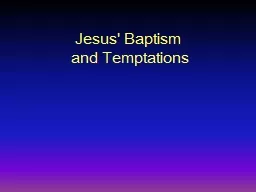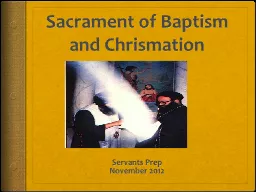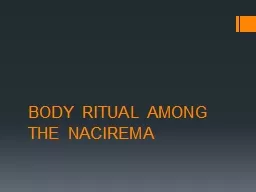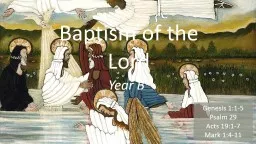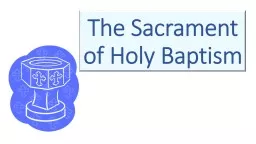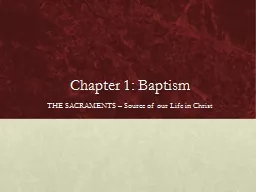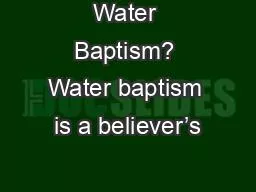PPT-What is the Context of the Ritual of Baptism
Author : alexa-scheidler | Published Date : 2016-12-13
Cleansing oneself with water to bring about physical cleanliness is as old as human history The transition from water as a means to achieve physical cleanliness
Presentation Embed Code
Download Presentation
Download Presentation The PPT/PDF document "What is the Context of the Ritual of Bap..." is the property of its rightful owner. Permission is granted to download and print the materials on this website for personal, non-commercial use only, and to display it on your personal computer provided you do not modify the materials and that you retain all copyright notices contained in the materials. By downloading content from our website, you accept the terms of this agreement.
What is the Context of the Ritual of Baptism: Transcript
Download Rules Of Document
"What is the Context of the Ritual of Baptism"The content belongs to its owner. You may download and print it for personal use, without modification, and keep all copyright notices. By downloading, you agree to these terms.
Related Documents





